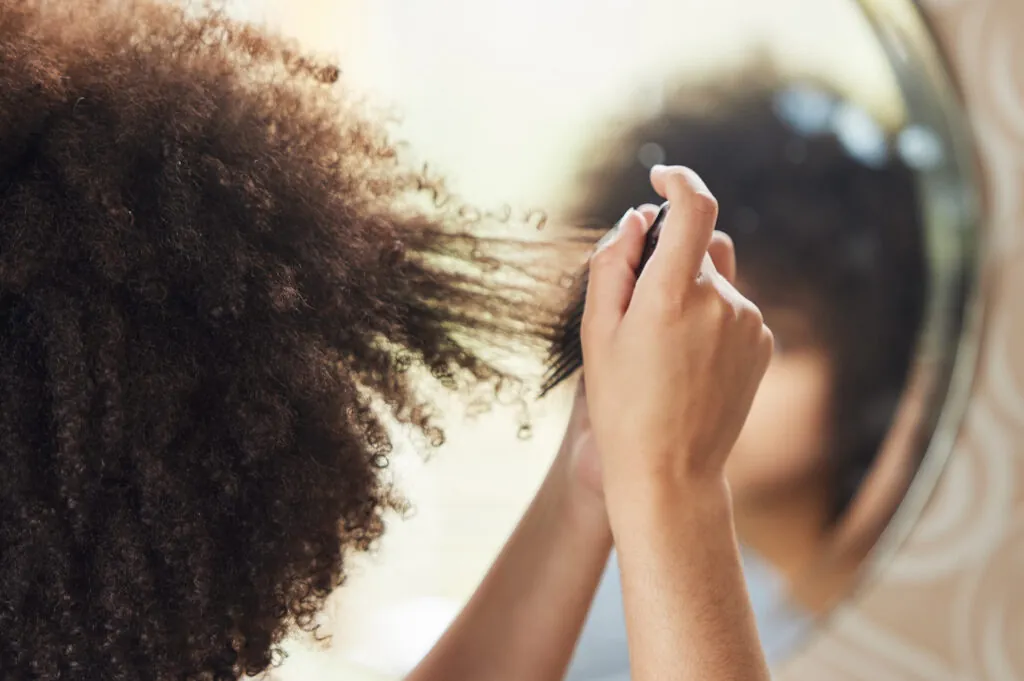Raleigh, NC: (919) 277-9299

Uncovering the true ingredients in hair relaxer products revealed a controversy between what manufacturers knowingly sell and what consumers believe they’re buying. Some hair care brands advertise their products as safe solutions for taming curls and creating more manageable hair. However, hair relaxers may introduce far more serious issues than textured hair. Research has revealed an increased risk of uterine, endometrial, and ovarian cancer in frequent hair relaxer users. (See Journal of the National Cancer Institute 2022 Report).
Hazardous Ingredients
The Silent Spring Institute scientists performed a study to measure endocrine-disrupting chemicals (EDCs) in hair products. This novel study published in Environmental Research evaluated 18 hair products, including hair relaxers, and revealed several hazardous EDCs and potential carcinogens, including alkylphenols, cyclosiloxanes, fragrances, parabens, and phthalates. The study uncovered serious failings of the manufacturers and revealed critical information to consumers about the products they were using.
Here are a few highlights of the Silent Spring study:
- 45 EDCs were detected in the sampled products
- Each product contained 4 to 30 target EDCs
- Hair relaxers commonly included parabens, fragrances, nonylphenols, and diethyl phthalate
- All products tested contained fragrance chemicals
- 84% of chemicals detected were not listed on product labels
- Hair relaxers for children contained the highest levels of five chemicals prohibited in the EU
Incomplete Product Labels
The Environmental Working Group (EWG) considers hair relaxers a top-five product to avoid due to their cancer-causing active ingredients. Putting a no-lye hair relaxer designed for children into the EWG database (which evaluates product labels for potential hazards) offers a snapshot of their reasoning. The product marketed to children is listed as more dangerous than not, and the ingredient concerns highlight cancer and reproductive toxicity. Many adult hair relaxers hold a similar truth, scoring highly hazardous ratings despite phrases like, “Healthy-Gloss,” “Advanced Strengthening & Protection,” and “Deep Conditioning” included on the packaging.
The problem is that a database like the EWG’s can caution consumers against only the ingredients manufacturers admit they used. Since Silent Spring’s study found that 84% of chemicals detected weren’t listed on the product label, it’s nearly impossible for consumers to know the whole truth about hair relaxers so they can make informed choices.
Misleading ‘Gentler’ Formulas
No-lye relaxers—which include a different active ingredient than lye-based creams—became popular because these were marketed as gentler and easier to use.
The lighter chemical scent, reduced irritation, and gradual processing make no-lye relaxers popular, especially for at-home applications. A consumer need not be a trained stylist to use most no-lye relaxer brands, and may purchase kits nearly anywhere hair care products are sold. The convenience and ease make it hard for some to believe that no-lye relaxers cause cancer.
Here are how no-lye hair relaxers achieve their preferred qualities:
- Pleasing Scent: Phthalates, cancer-causing EDCs, are used as scent agents in no-lye relaxers to provide a ‘harmless’ scent.
- Gentler Chemicals: The milder chemicals cause less burning, allowing users to tolerate no-lye cream applications longer (potentially increasing their exposure to toxins).
- Gradual Processing: All relaxers rely on a certain level of alkali hydroxides to change a follicle’s pH, so this slower, ‘gentler’ processing does not shield users from harm.
- Extra Freshness: Many packages highlight a ‘fresher longer’ feature which can be attributed to parabens, known EDCs.
This doesn’t mean lye relaxers are a better choice. It means manufacturers have misled consumers, insinuating that milder formulas are safer when in reality all hair relaxers can pose health hazards. Child-friendly relaxers were also debunked by Silent Spring, which discovered high levels of five chemicals prohibited in the UK in products marketed for adolescent use.
Women deserve to know all the ingredients in the products they use in order to make informed decisions. Because cosmetic brands refuse to admit the truth about hair relaxers, women are forced to file lawsuits against them to make themselves heard.
At Bell Legal Group we are here to listen to your story!
